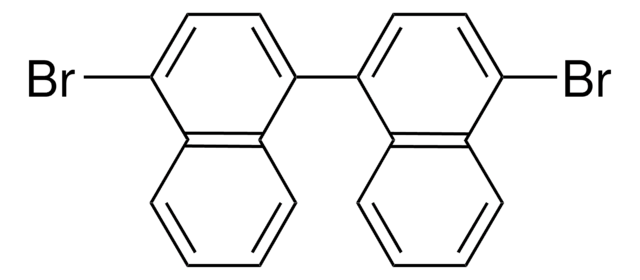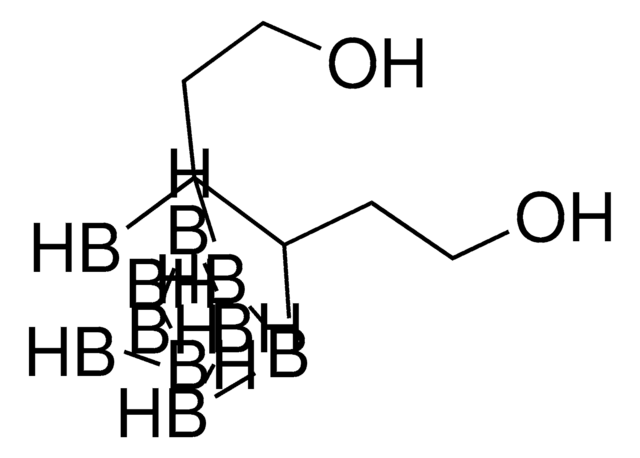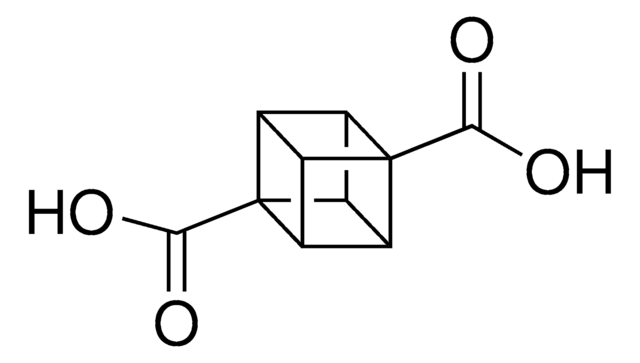288187
o-Carborane
98%
Sinonimo/i:
1,2-Dicarbadodecaborane(12)
Autenticatiper visualizzare i prezzi riservati alla tua organizzazione & contrattuali
About This Item
Formula empirica (notazione di Hill):
C2H12B10
Numero CAS:
Peso molecolare:
144.23
Numero CE:
Numero MDL:
Codice UNSPSC:
12352300
ID PubChem:
NACRES:
NA.23
Prodotti consigliati
Saggio
98%
Punto di fusione
260 °C (subl.) (lit.)
Temperatura di conservazione
2-8°C
Stringa SMILE
[bH]1[bH][bH][bH][bH][bH]cc[bH][bH][bH][bH]1
InChI
1S/C2H12B10/c1-2-4-6-8-10-12-11-9-7-5-3-1/h1-12H/b2-1-
PWHTZDUTEHXWHV-UPHRSURJSA-N
Categorie correlate
Descrizione generale
Electron deficient boron cage compounds with one or more carbon atoms as a ligand in the borane framework. The three common isomers are o-carborane, m-carborane and p-carborane 1The structure could be polyhedral or open cage.
Confezionamento
Packaged in glass bottles
Avvertenze
Warning
Indicazioni di pericolo
Consigli di prudenza
Classi di pericolo
Acute Tox. 4 Dermal - Acute Tox. 4 Inhalation - Acute Tox. 4 Oral
Codice della classe di stoccaggio
11 - Combustible Solids
Classe di pericolosità dell'acqua (WGK)
WGK 3
Punto d’infiammabilità (°F)
Not applicable
Punto d’infiammabilità (°C)
Not applicable
Dispositivi di protezione individuale
dust mask type N95 (US), Eyeshields, Gloves
Scegli una delle versioni più recenti:
Possiedi già questo prodotto?
I documenti relativi ai prodotti acquistati recentemente sono disponibili nell’Archivio dei documenti.
Yin-Ping Wang et al.
Chemistry (Weinheim an der Bergstrasse, Germany), 23(8), 1814-1819 (2016-11-30)
Palladium(II)-induced selective B(4)-H activation of an o-carboranylthioamide has been developed. A tetranuclear palladium(II) complex has been obtained in high yield with excellent regioselectivity. DFT calculations have confirmed that the B(4)-borometalate is lower in energy than the corresponding B(3)-borometalate. The product
Temidayo O B Olusanya et al.
Biophysical chemistry, 247, 25-33 (2019-02-24)
Based on the promise of liposomes as convenient vehicles for the transport of boronated agents for the boron neutron capture therapy (BCNT) of cancer, this paper reports a method for the formulation and characterisation of stable o-carborane-loaded liposomes (ca. 80-100 nm)
Issei Takeuchi et al.
Colloids and surfaces. B, Biointerfaces, 159, 360-365 (2017-08-15)
Poly(DL-lactide-co-glycolide) (PLGA) has been widely used and studied because of its biocompatibility and biodegradability. Recently, the usefulness of nanoparticles using poly(L-lactide-co-glycolide) (PLLGA) having a higher glass transition temperature than PLGA was suggested. In this study, we investigated the availability of
Il team dei nostri ricercatori vanta grande esperienza in tutte le aree della ricerca quali Life Science, scienza dei materiali, sintesi chimica, cromatografia, discipline analitiche, ecc..
Contatta l'Assistenza Tecnica.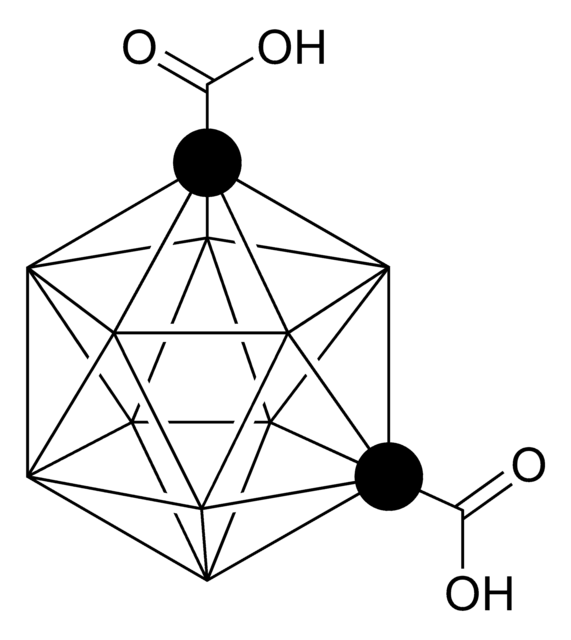
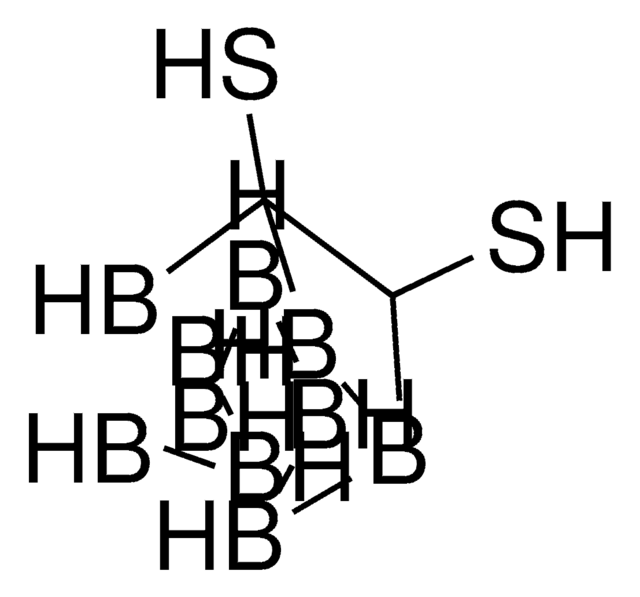
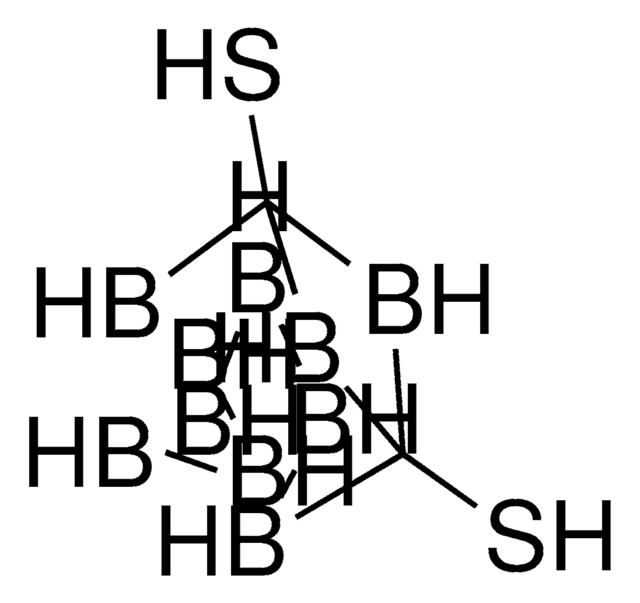

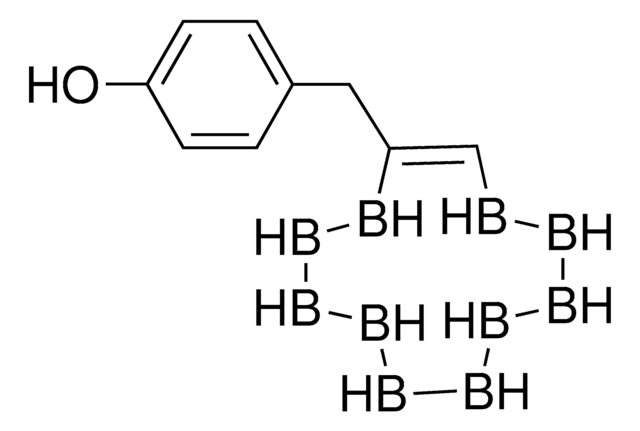
![2,2,6,6-Tetramethyl-4-[1-oxo-6-(triethylammonio)hexylamino]-1-piperidinyloxy bromide 95%](/deepweb/assets/sigmaaldrich/product/structures/398/827/e455c61a-b8fc-4800-9d17-107d734f6aa8/640/e455c61a-b8fc-4800-9d17-107d734f6aa8.png)

